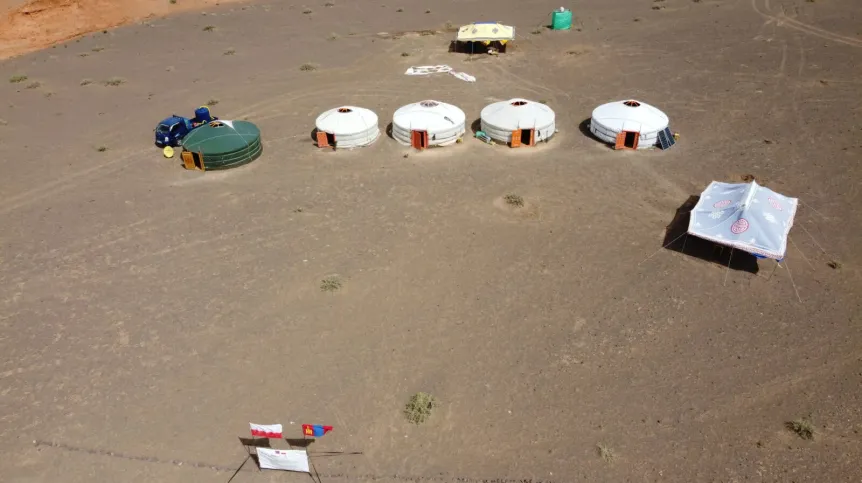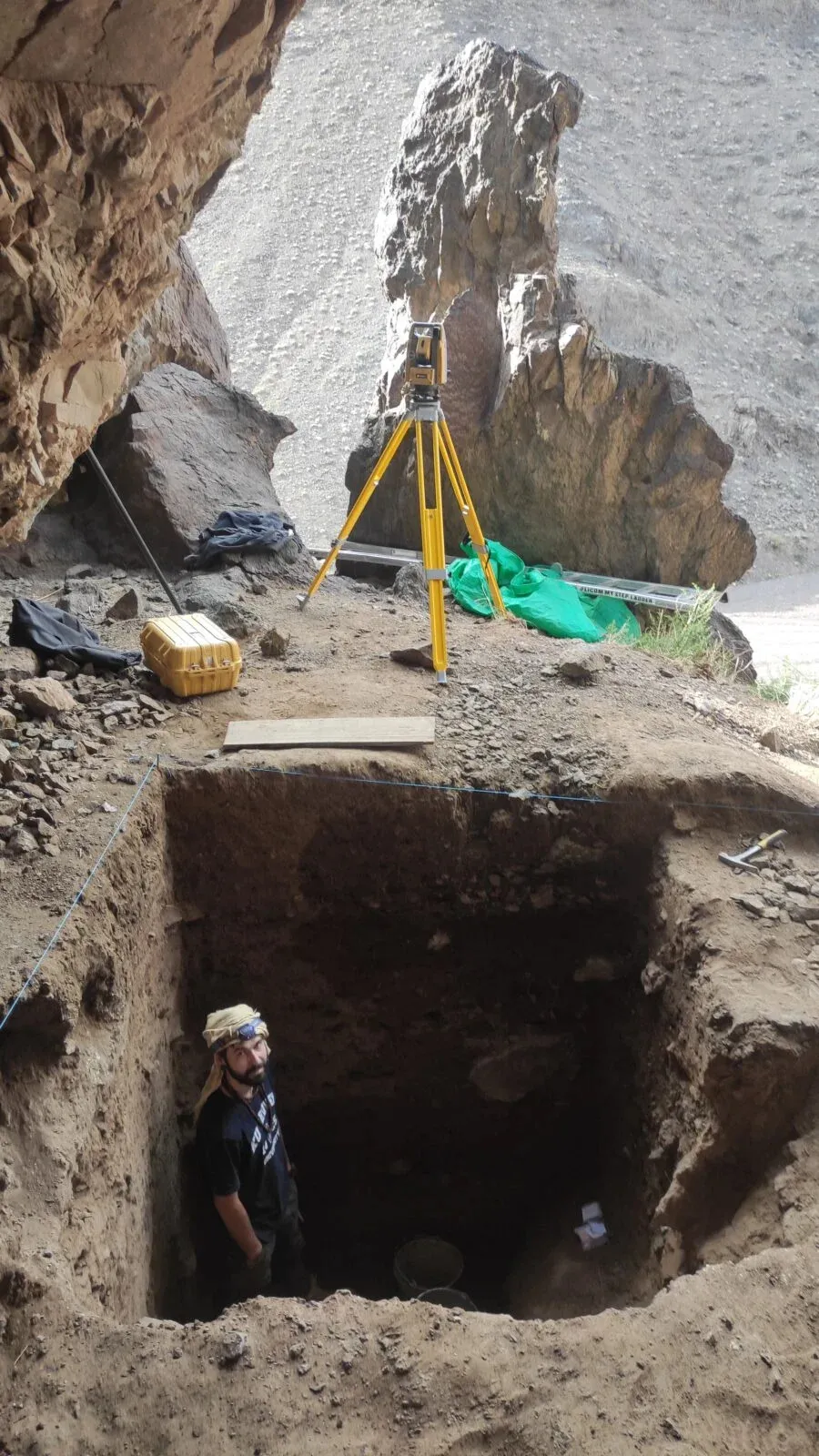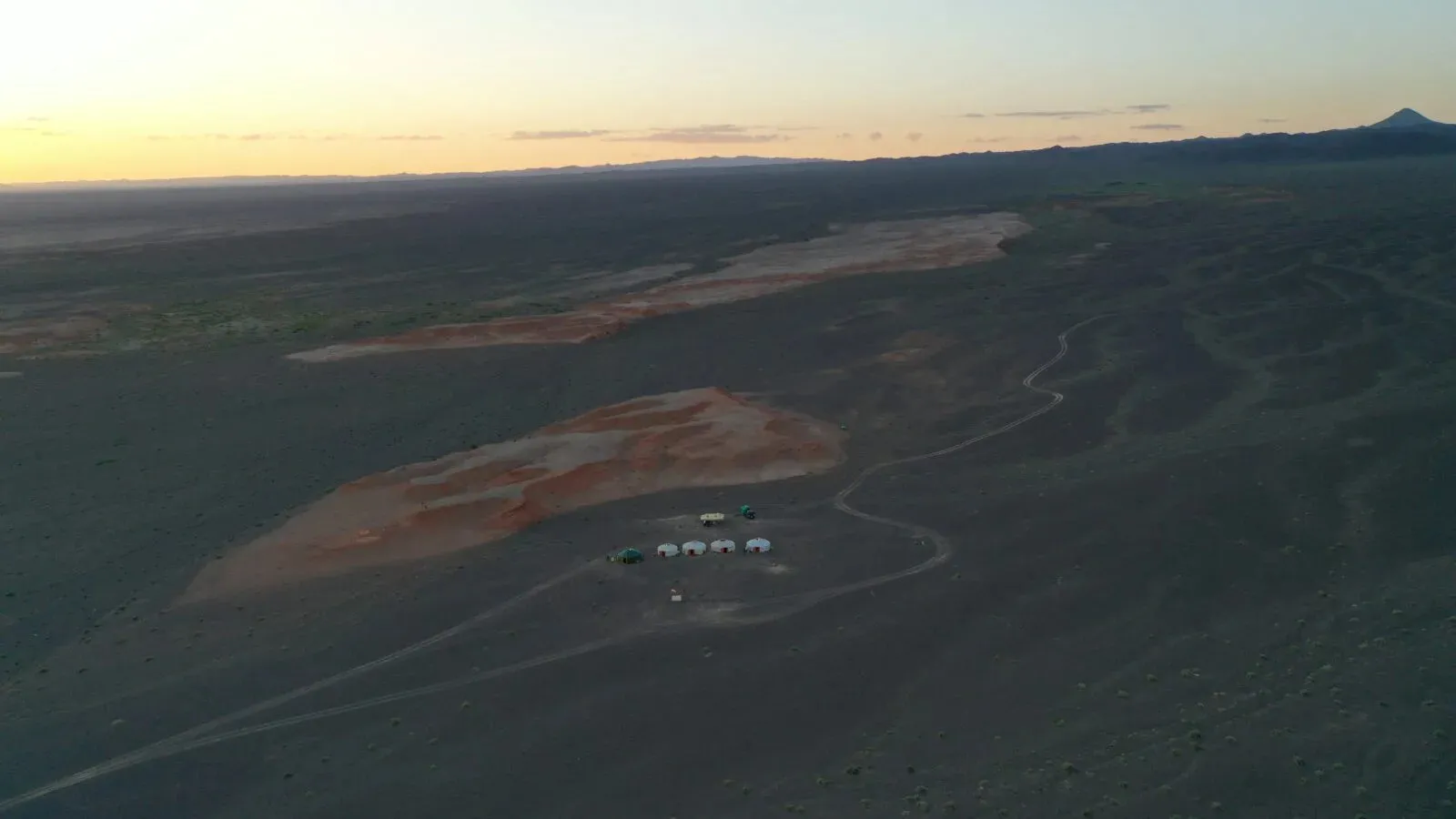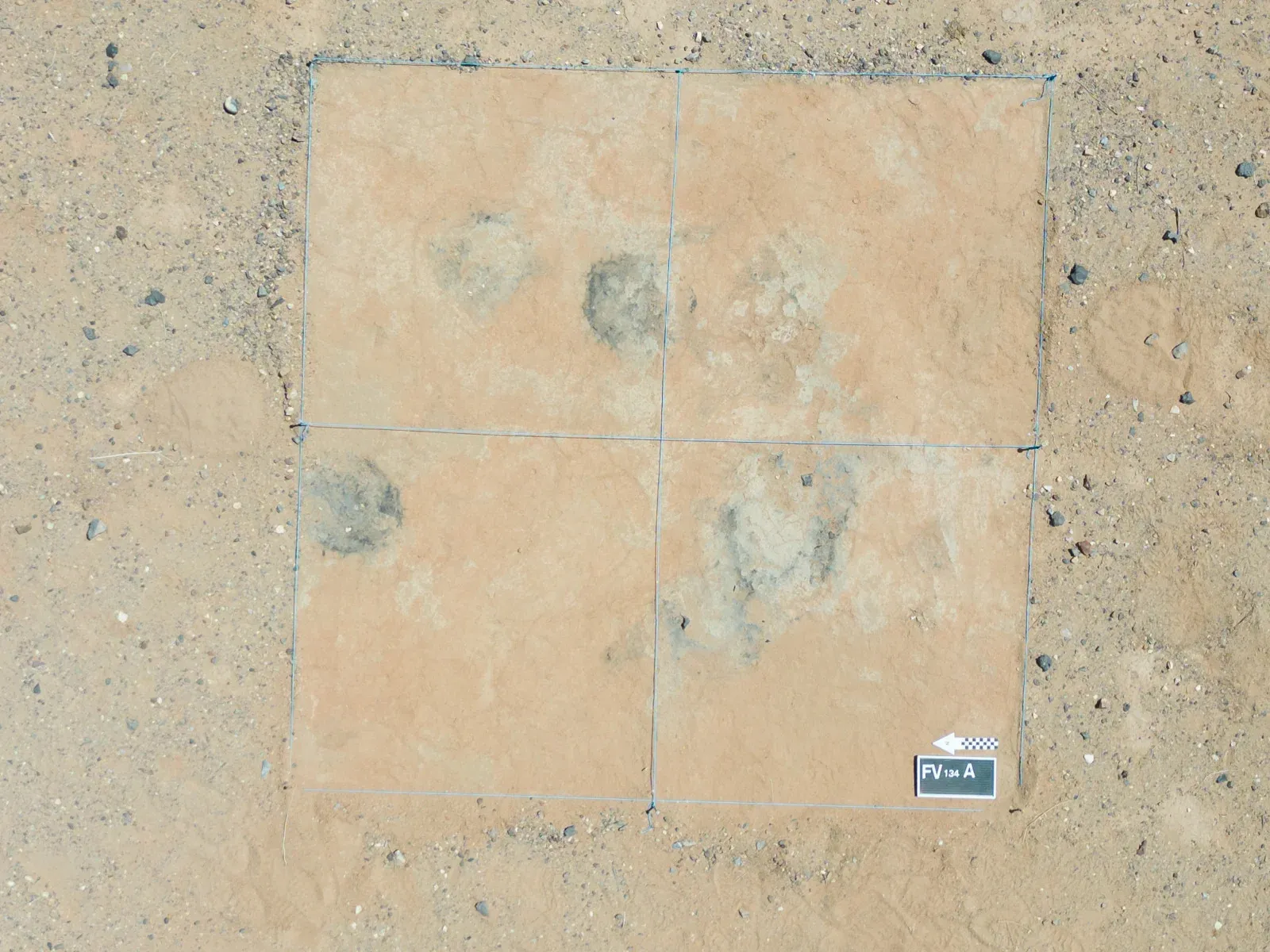
Archaeologists working in Mongolia have discovered traces of human activity from the early Holocene, including well-preserved hearths, pottery and ostrich egg products. The data they have obtained may play an important role in research on the spread of Homo sapiens in this area.
This is the second of three seasons of field work planned in the research project led by Dr. Mirosław Masojć, a professor at the University of Wrocław. The research is conducted in cooperation with the Mongolian Academy of Sciences, the Mongolian National University of Education in Ulaanbaatar, the Archaeological Museum in Gdańsk, the Institute of Archeology and Ethnology of the Polish Academy of Sciences and the Polish Geological Institute.
The researchers worked in the Govi-Altai area in southern Mongolia. The camp itself, consisting of five yurts, was set up in a desert area a few kilometres from the southwestern mountain range Arts Bogdyn Nuuru.
Archaeologists intend to analyse human activity in the Pleistocene (2.6 million-11,700 years ago) and early Holocene (approx. 11.6 to 8/7,000 years ago) in the area surrounding the so-called Flint Valley, which at that time was an easily accessible outcrop of high-quality silica rocks used for the production of tools. They want to determine survival strategies, the nature of the settlement network and the mobility of the communities living in this region.
'Pleistocene communities, due to their hunter-gatherer socio-economic model, were characterized by high mobility related to obtaining food and raw materials (stone and organic raw materials) used to make everyday products. Previous research (...) on sites in Mongolia and neighbouring areas (including Russia, China) indicate that in the period before the arrival of Homo sapiens (350,000 to approximately 50,000 years ago), this region was inhabited by various species - Homo neanderthalensis and Homo denisoviensis),’ says Grzegorz Michalec from the Institute of Archaeology of the University of Wrocław, a member of the research team.
He explains that the data obtained during the project may play an important role in research on the spread of our species. 'Strong climatic and environmental changes in the early Holocene determined changes in human survival strategies. Archaeological data indicate that people still used the hunter-gatherer economy model, but a significant difference is visible regarding the emergence of technological innovation - the production of ceramic vessels,’ says Michalec.
The work carried out so far has been focused on identifying the extent and type of human settlements within four Palaeolithic lakes discovered in an area of several dozen square kilometres. Dating of sediments obtained by drilling into the bottoms of the lakes indicate that they existed from 150,000 years ago to approx. 4,000 years ago. Additionally, survey work was carried out in one of the nearby caves.
This year's research focused on excavations at late Pleistocene and Holocene sites near the third Palaeolithic lake and at a cave site in the Bogdyn Nuuru massif. The site is located at an altitude of approximately 1,650 m above sea level and approximately 40 m above the level of the nearby Khutul Usny valley.
'The results of this work confirm previous findings that the cave was inhabited by humans several times in different time periods - from the early Holocene to the Pleistocene. Within the deepest stratigraphic unit, which is loess, in addition to stone artefacts and numerous animal remains, several bone beads were also discovered,’ Michalec says.
This year the researchers explored the previously untouched area of the fifth, southwesternmost lake. Excavations have been carried out at several most promising newly discovered sites.
'Traces of human activity associated with early Holocene hunter-gatherer communities were discovered within these sites. In addition to numerous very well-preserved hearths and objects surrounding them in the form of small pits containing stone artefacts and ceramics, several clusters of stone artefacts were also discovered, interpreted as the remains of workshops for the production of stone tools in the camps inhabited by these groups. An important find were numerous products made of ostrich eggs - complete pendants and beads,’ Michalec says.
The [roject 'Around Tsakhiurtyn Hondi. Stone Age Research on the Borderland of Altai and the Gobi Desert in Mongolia' is financed by the OPUS17 programme of the Polish National Science Centre.
Find out more here.
PAP - Science in Poland
ekr/ agt/ kap/
tr. RL
















